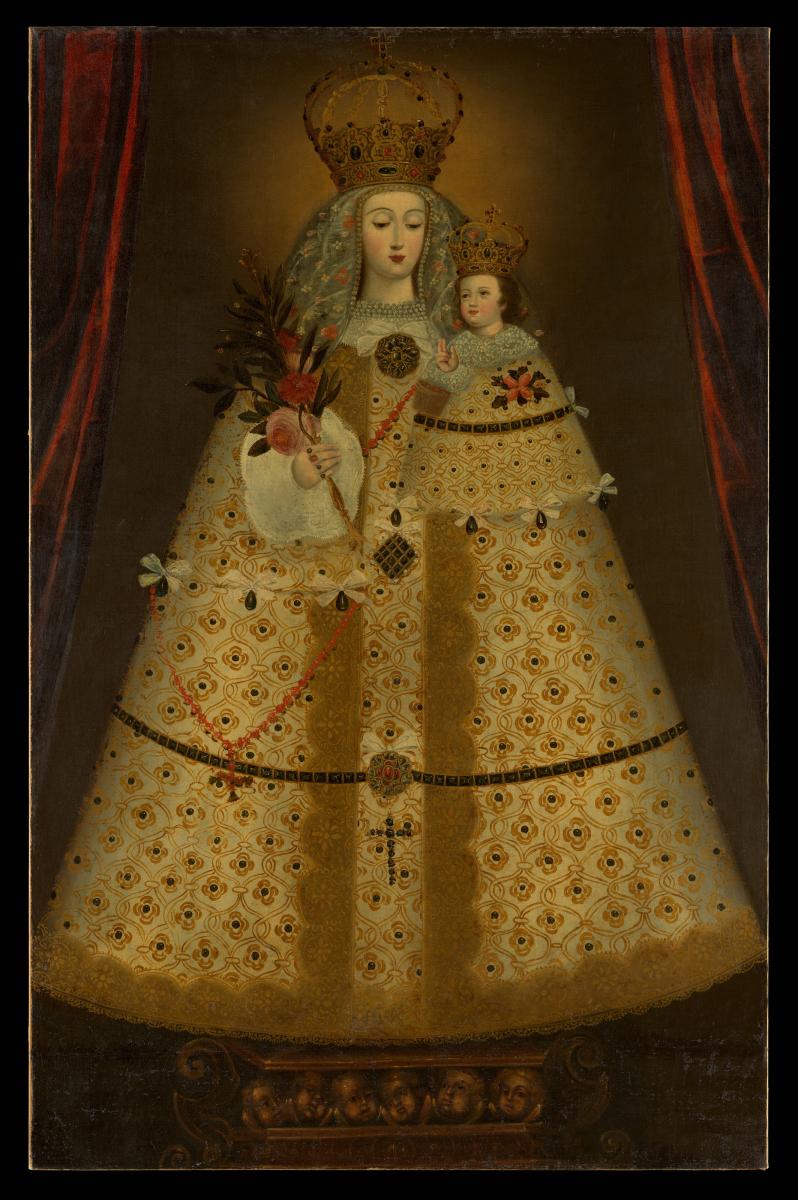Putting a stamp on the season
October 19, 2020
Share
Over Christmas, millions of letters and packages are delivered all over the world, affixed with special stamps for the season. But how are the images for the stamps selected?
Queen’s University art expert Gauvin Alexander Bailey acted as a consultant for the selection of artwork for this year’s United States Post Service (USPS) Christmas stamp. This year’s version of the stamp features a detail of Our Lady of Guápulo. Painted by an unknown artist, likely an Amerindian working in Cuzco, Peru, the 18th-century oil painting depicts the Virgin Mary looking down at a richly dressed Christ Child.

As an acknowledgment of the importance of Latinx culture in the United States, the USPS wanted a Christmas image that reflected this community and the rich cultural heritage of Spanish America in general. They contacted Dr. Bailey (Art History and Art Conservation) who is an expert in Southern European and Latin American Baroque Art to review the selection.
“I was approached in 2017 by PhotoAssist, a Maryland-based image fact-checking company contracted by the United States Postal Service because the USPS wanted to make a Christmas stamp with a Latin American image. One of my specialties is colonial Latin American painting,” explains Dr. Bailey. “As a consultant I reviewed art, text, and subject matter to make sure the painting and its historical significance are represented accurately.”
Dr. Bailey says normally the Madonna and Child images chosen for Christmas are European in origin – in the past many have been from the Italian Renaissance, from U.S. museums (e.g. a Florentine Renaissance one for the 2016 Christmas stamp, from the National Gallery of Art). Our Lady of Guápulo is in the Metropolitan Museum of Art.
This oil painting depicts a pilgrimage image of the Virgin and Child (a dressed sculpture) named the Virgin of the Rosary of Guápulo in present-day Ecuador. She herself is a 1584 copy of a Spanish sculpture called the Virgin of Guadalupe. In fact, “Guápulo” was a local Quito mispronunciation of “Guadalupe.” Toward the end of the 17th century paintings of the sculpture began to proliferate as a way of raising funds for the original shrine and the Virgin’s cult spread throughout the Andes.
“The painting on the USPS Christmas stamp represents the apex of colonial painting in South America and is painted with extreme delicacy and attention to detail, particularly of the costume,” says Dr. Bailey, Bader Chair in Southern Baroque Art. “What makes it interesting is that it is not just a copy of the original but reflects Peruvian taste in the lavishness of its costume and golden crowns, and in the prominence of the floral bouquet.”
For more information, view the stamp here.